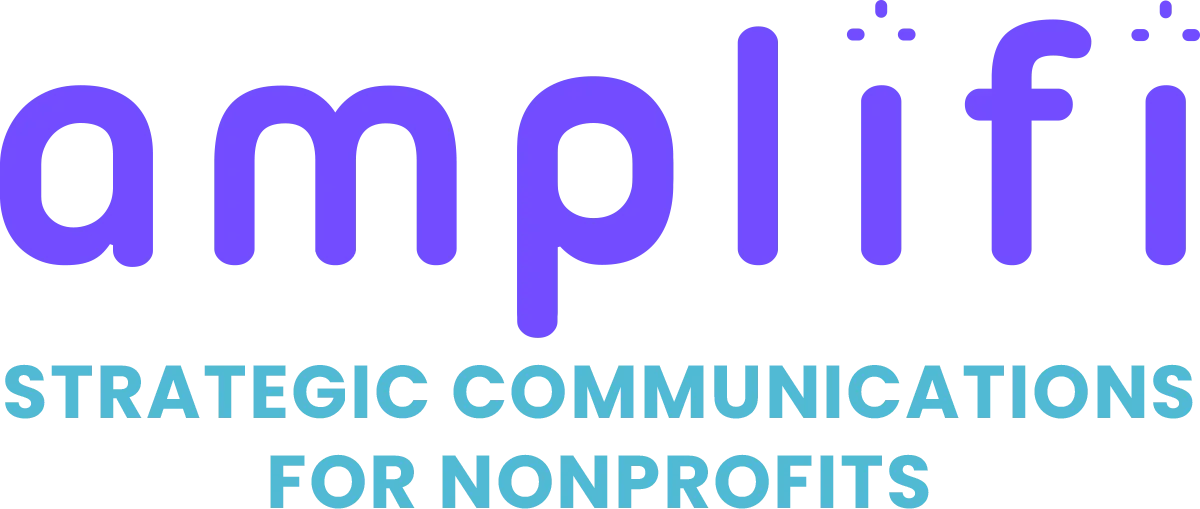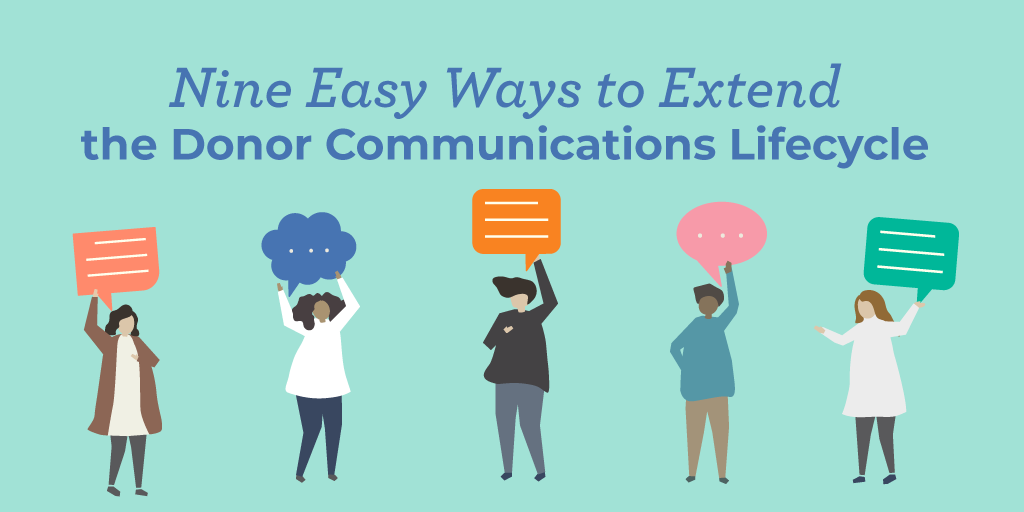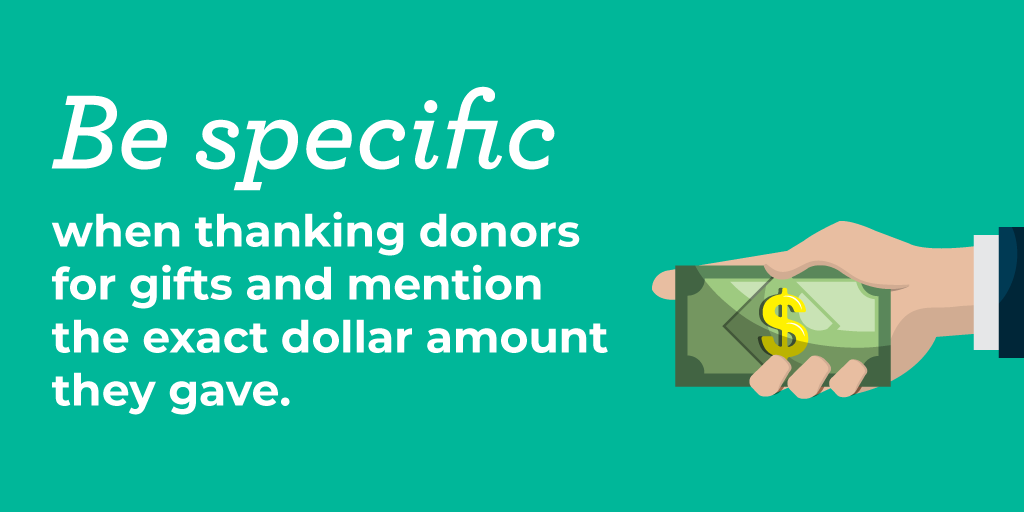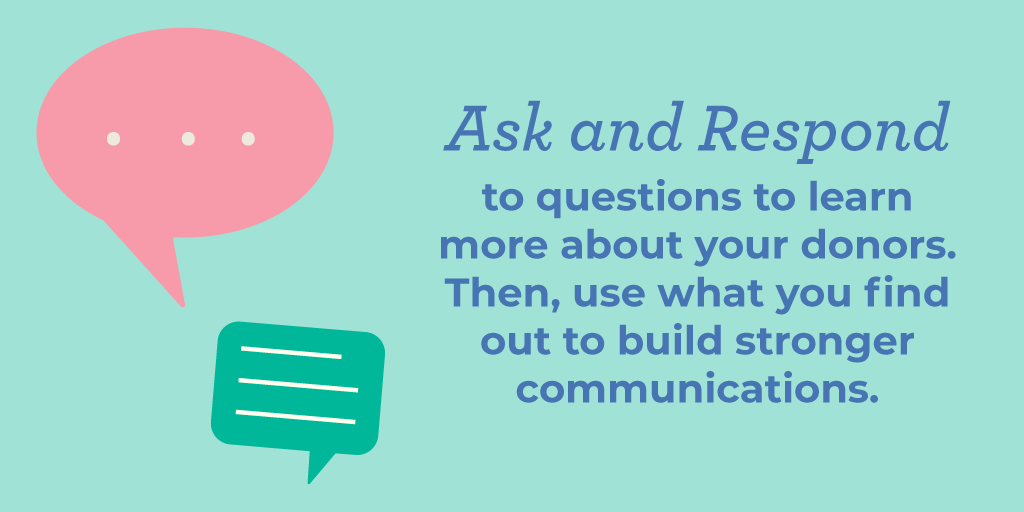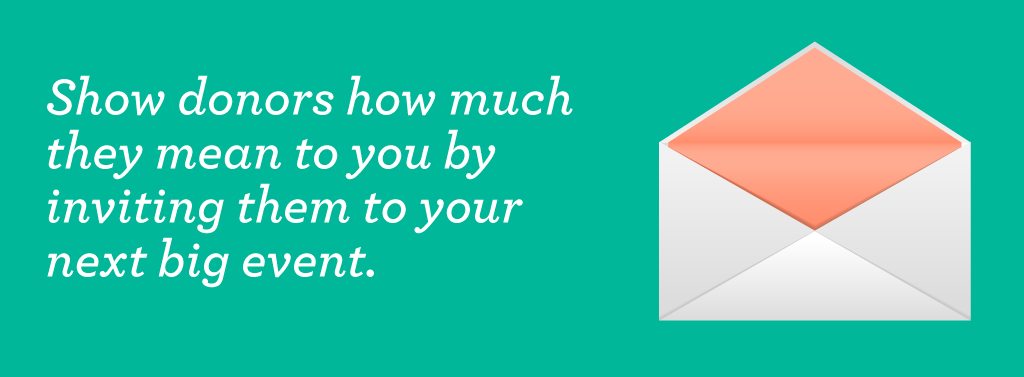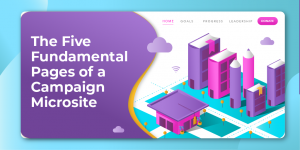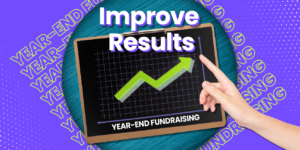There are few worse feelings than being asked to give again and again without some fresh air. I think we’ve all suffered through one of those long “are we there yet, are we there yet?” road trips. Now, imagine that feeling, except you’re being asked to give your money, over and over. That gets old fast! Don’t make a hard ask every time you interact with your donors. You need to plan for the donor communications lifecycle and prepare to connect with your donors year-round.
on’t look at sending a thank you email after a donation as the end of a financial transaction. Instead, think of it as the start of a new relationship between the donor and your organization!
Keeping in touch with your donors helps them develop a sense of loyalty and trust with your organization. Implementing the following strategies into your outreach will help your donors understand that you see them as more than just a dollar sign.
1. Send a New Donor Welcome Package
Acquiring long-term donors is crucial to sustaining fundraising success. But you need to welcome new donors into to your organization properly if you want to see long-term value. It’s about helping new donors feel like they are part of the community.
You can send the elements of your welcome package to donors all at once to create a welcome kit. Or, send materials individually and build a multi-touch strategy.
Either way, make sure the donor knows how much you appreciate their first gift to your organization. You can use a handwritten letter to express your gratitude, explain the impact their donation made, and give them the opportunity to get more involved.
Your new donor may not know that much about your organization yet. So, include additional educational materials like a brochure or newsletter that show your mission in action.
And don’t forget to include contact information for someone within your organization. The donor should feel empowered to reach out on their own if they want to learn more.
2. Thank Donors for Specific Gifts
Don’t take the easy way out and send the same generic thank you to all your donors. You might save a few minutes now. But you could be leaving thousands of dollars on the table!
An effective thank you is one of the most important parts of the donor communications lifecycle. It’s critical to go the extra-mile with your thank you to secure long-time donors.
Use your data to create thank you’s that feel relevant and special for each donor. When donors feel like you took the time to acknowledge them specifically, they will know their donation made a difference and are more inclined to contribute the next time you make an ask.
3. Inform Donors of Volunteer Opportunities
Let your donor base know that there are more ways to contribute to your nonprofit besides monetary gifts. Keep them aware of when an opportunity to volunteer with your organization is coming up.
Invite your donors to participate in volunteer opportunities related to the programs they’ve shown interest in. Using your data this way demonstrates that you are really paying attention to what is important to your donors. It’s another step in building a strong relationships.
4. Respond to Questions
You probably have a form on your website or a designated email address for people to ask questions or get more information. Make sure that you are replying to these inquiries as quickly as possible!
Good customer service is integral for any organization. You need to apply that mindset to keeping your donors happy. Answering questions promptly shows donors you value them as partners and appreciate their input.
Answering these questions can have a tremendous benefit for your organization. First of all, a donor or potential donor must have at least some level of interest in your organization if they reach out. So see if you can take their engagement to the next level!
Also consider the information you can gain from these questions and how you can use it to extend the donor communications lifecycle. Anything you can learn about donor preferences through a donor’s questions is valuable to your nonprofit.
For example, if several donors asking for more information about a specific program, make it the highlight of your next newsletter!
5. Ask About Donor Preferences
We just explained how you can gain valuable information when donors ask questions. But not all donors will reach out on their own. You can learn a lot about your donor base if you take the initiative to ask what’s important to them.
Consider emailing a donor preference survey. The questions you ask will depend on your organization’s needs.
For example, if your last fundraising campaign was very successful, you can ask donors what inspired them to give. Then keep their answers in mind when planning for future campaigns.
You can also glean more general information about your donors and their preferences with your survey.
Try asking donors how often and when they prefer to receive emails. Or, ask if they still enjoy giving through a direct mail appeal. If not, you might consider saving some money by going paperless with some donors.
Finding out more about donor preferences with a short survey will help you better communicate on your audience’s terms.
6. Send Birthday or Holiday Cards
This is a fun and lighthearted way to extend the donor communications lifecycle.
Remember, we want donors to feel like part of the community. What better way to add a human element to your communications pipeline than sending a personal birthday or holiday card! This lets donors know that you remember the little things about them.
Or, instead of sending birthday cards, consider sending donor anniversary cards. When the one-year anniversary of a donor’s first gift comes around, send a card or letter that thanks them for their commitment.
Reminding donors that you still appreciate their gift from a year ago could motivate them to donate the next time you do make an ask.
7. Create Engagement Opportunities
Donor communications do not have to be a one-way street. You’ll spend a lot of time and energy planning your communications pipeline and coming up with new messages for your donors. Don’t forget to give your donors a chance to share their message with you!
If you have a strong presence on social media, many of your donors may already be engaging with you online. Try asking your followers to share a memorable experience with your organization. Or ask users to post photos that are relevant to your mission. You might even run a contest where followers who engage and perform a specific action on your page are entered to win a small prize.
If you don’t have a huge following online, creating opportunities for engagement can help you get there. In order to gain a substantial following on social media, you need to post a lot of content.
So why not have your donors and followers share their own stories to your page? This helps you create fresh, relevant content and will encourage others to engage, share their stories, and hopefully give.
8. Invite them to Events
Inviting donors to your next big event is a great way to show how much your donors mean to your nonprofit. It re-enforces the bond you’ve been building and takes your relationship a step further.
While attendance is icing on the cake, it’s not fully about getting the donor to attend.
Nobody wants to be the person who wasn’t invited to the party, even if they had another commitment and couldn’t make it. It really is the thought that counts!
So make your donors feel valued and send a personal invitation the next time you have seats to fill at an event. You can really “wow” an average donor by inviting them to your fancy gala!
9. Share Success Stories
This is one piece of advice that can apply to everything we discussed earlier in this post.
Include the story of someone who has benefited from your organization’s work in your new donor welcome package.
When thanking donors for specific gifts, provide real examples of how their contribution furthers your nonprofit’s goal.
When you inform donors about upcoming events or volunteer opportunities, include a story from someone who participated last year.
You can always include a story, whether you are connecting with donors through emails, newsletters, or appeals. Providing a real-world example gives evidence that supports your message and can evoke an emotional response.
And donors want to see how their contribution is making a difference. In fact, a study by Abila found donors in all age groups surveyed (millennials, gen Xers, boomers, and matures) were more interested in receiving personalized impact reports after donating than any other form of follow-up.
The Donor Communications Lifecycle
When planning your communications pipeline remember, you don’t want every piece to serve as an appeal. So stick to your regular appeal strategy.
The nine items covered above are intended to serve as light touches that fill in the gaps of your outreach. They remind your donors they are part of a community and are always on your mind.
How would you feel if an organization sent you a birthday card that was accompanied by a donation reply card? You would probably think they really didn’t care about wishing you a happy birthday at all! You might even be offended that they saw your birthday as just another opportunity to solicit a donation.
These strategies compliment your appeal strategy. They will help you maintain more consistent contact with donors and help them feel like part of the community. They keep your organization on donors’ minds, so they are more likely to give the next time you do send an appeal!
